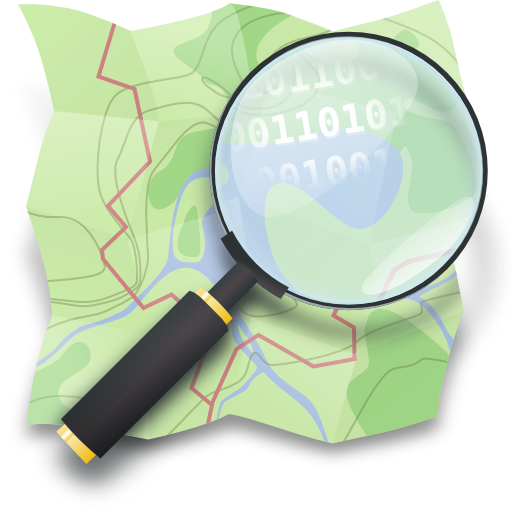What have we learned? That we should tempt more billionaires into deep-sea adventures or launch them into space.
- 13 Posts
- 969 Comments

 5·4 hours ago
5·4 hours agoI don’t mind paying for high-quality journalism but not CNN.

 4·4 hours ago
4·4 hours agoI don’t think Google “taking a page” out of the Apple playbook is quite the right analogy. It’s more like both companies were reading the same book to begin with—tight control over a market means you can extract more value out of it without needing to worry about competition.
Another common W for Steam, but in all seriousness, arbitration clauses in consumer contracts need to be banned.

 111·4 hours ago
111·4 hours agoAnd if you fail the V2, it’ll just take your word on it and let you pass anyway.

 142·19 hours ago
142·19 hours agoHot take: Global geopolitics within the current rules as we understand it don’t allow for countries to genuinely respect each other as equals. Might will always be right on the global stage regardless of whether it should be that way. So when it comes to picking a global hegemon, the United States is really not a terrible choice compared with the alternatives.
Yep. The passport card is the American national identity card.
Americans have several forms of identity cards. There’s the famous green card for non-citizen permanent residents, passports and passport cards, military IDs for military personnel, school and university ID cards, and ID cards issued by states.
Passport books in America work the same as passports in every other country. You apply for one and it’s a little booklet that lets you travel internationally.
A passport card is a national identity card that is legally identical to a passport book for identity and citizenship verification purposes.
Green cards are cards issued to immigrants who have been granted permanent residency.
The most popular form of identification card is an identification card issued by a state’s motor vehicle agency. These function as identification cards only and are not proof of nationality or immigration status. If the holder is also licensed to drive, the words “identification card” are replaced with the words “driving license”. The card is otherwise the same.
Military ID cards are issued by the military to soldiers and civilian staff members.
Student ID cards are issued by educational institutions to their pupils.
All of these documents are valid identity documents and can be used for any purpose (except that student ID cards are generally not valid for voting, buying alcohol, opening bank accounts, admission into casinos, or anything that requires the holder to be of adult age). Domestic airplane flights require a “REAL ID”-compliant identity card, which includes everything except student ID cards old state-issued identity cards, because those cards generally are valid for 10 years or more, and some are very old and lack security features present in newer cards.
The passport book and passport card can be used for land and sea travel within North America. The other documents cannot.
The disgusting thing is that other than university and school ID cards and military ID cards, none of these documents are issued for free. All of them require a fee to be paid before they are issued, which is why voter ID laws are controversial in the USA; they discriminate against those who cannot afford to pay the fees for an identity card and the offices where people can apply for them generally aren’t located in the poorer areas of cities. Applying for a state-issued ID card is also generally an all-day affair as queues at the motor vehicle agency offices are very, very long.
The passport card is legally equivalent to a passport book within the United States. It’s also conclusive proof of citizenship (rather than presumptive proof, like a birth certificate).
It’s popular in the border regions because it’s cheaper than a passport book and can be used to enter Canada or Mexico by car.

 1·1 day ago
1·1 day agoThat’s essentially what FedNow wants to be, except the goal is to replace the debit card network.
Trying to start a new debit card network is a chicken-and-egg problem.

 2·1 day ago
2·1 day agoSee this symbol?

If you have a card issued by a credit union, yours probably has this too. It means you can use any other credit union’s ATMs that have this symbol without fees as if they were owned by your credit union.
There are thousands of credit unions across the US operating tens of thousands of ATMs. 7-Eleven ATMs are also part of this network.
I’m not saying that postal banking is a bad idea. In fact, it’s a great idea, as a way to serve underserved communities and as a way to generate revenue for the Postal Service, if nothing else. But the idea of not-for-profit banking on a national scale isn’t exactly a new concept.
There already exists a national ID card. It’s called a passport card and costs $30 to apply for. You can apply by post but it’s cumbersome because you need proof of citizenship, a passport photo, and it takes several weeks to receive.
It’s called a “passport card” because it’s also valid for international travel by land or sea within North America and the Caribbean.

 1·1 day ago
1·1 day agoWhat country is this?
In the US, we have credit unions. Credit unions are member-owned not-for-profit financial institutions that offer the same services as banks.

 1·2 days ago
1·2 days agoWhat is this service?
I really doubt it will be as revolutionary as you claim.

 2·2 days ago
2·2 days agoThere are a few types of “anonymity”.
The highest level of anonymity is perfect anonymity, where it is literally impossible to prove a transaction occurred or know anything about that transaction without being a party to that transaction. Some private cryptocurrencies are truly perfectly anonymous because it’s cryptographically infeasible to determine who paid whom and how much was paid without being a party to that transaction. Metal coins are generally perfectly anonymous. Paper money is nearly perfectly anonymous. They still have serial numbers that can be traced. It is easy to make arguments that perfect anonymity is undesirable because the drawbacks of allowing criminals, terrorist organisations, or sanctioned states to transact freely and in complete secrecy outweigh the privacy benefits to normal people compared to what they enjoy with lower levels of anonymity. I am not here to make an argument about this.
The next-highest level is what I will call “legal anonymity”, where knowledge of transaction details is tightly restricted by law. If you think of Swiss bank secrecy laws, this is close to what I mean. A CBDC can operate at this level of anonymity. The central bank would still theoretically know all details of all transactions, but the use of this information would be legally restricted and cannot be used for mass surveillance. However, the information is still retrievable by means of some defined legal process, such as a court subpoena or specific search warrant.
The level below that is what I will call “discretionary anonymity”. This is where a third party knows all the transaction details, and the restrictions on what they can do with this information are either weak or non-existent. Hence, your privacy is at the discretion of whoever holds this information. This form of privacy is weak compared to the other forms but a large portion of the population still finds this level of anonymity to be acceptable for everyday transactions. Bank transactions in the USA are discretionarily private. The bank can use and exploit the transaction data it knows with relatively few legal restrictions.
The final level is pseudo-anonymity, where transaction data is publicly accessible, but some information (such as the exact names of the payor and payee) is not provided. Bitcoin and most other cryptocurrencies are pseudo-anonymous.

 16·2 days ago
16·2 days ago.gov and .mil are controlled by the American government and they are reserved for use by American government websites and American military websites respectively.

 10·2 days ago
10·2 days agoKeep in mind that this is not necessarily a good thing. China’s economy is still mostly driven by Government spending and exports rather than consumer demands. The Chinese government would usually prefer the yuan to be weaker as this makes Chinese exports cheaper when denominated in foreign currencies and makes imports more expensive, discouraging domestic consumers from buying foreign goods.
The article does mention this as well, but the yuan’s exchange rate isn’t a great indicator of the Chinese economy as a whole because the central bank spends a great deal of time manipulating it.

 6·3 days ago
6·3 days agoI have a very strong feeling that @paf0@lemmy.world is being downvoted here, not because they make a bad point, but because they phrased it in terms of cryptocurrency which immediately triggers negative reactions from everyone.
What OP has proposed is neither novel, nor a terrible idea. In fact, economists call it a central bank digital currency. And yes, some countries have adopted it. It’s usually not run with a blockchain, but that’s because if you have a trusted central entity to run the system, that being the central bank, a blockchain is inferior in practically every aspect to a normal relational database. That’s why all current CBDCs still use fairly traditional accounting systems.
Your use, however, of the terms “real money” and “fake money” has, I believe, the effect of shutting down intelligent conversation, rather than encouraging it. “Money” is a social construct. “Real money” is whatever the Government declares to be “real” and that the population is willing to use. It doesn’t need to be physical money. And it is unquestionable that in the countries that have adopted the legal framework that allows their central banks to issue CBDCs, the money so issued this way is as real and legally equivalent to paper banknotes and metal coins.











“Voter ID” refers to the fact that the voter must have an ID card. You can use any ID and some ID-like documents as well (such as a firearms license). In states where these laws are in place, voters who do not possess an ID card or passport book when they go to the polling station will not be allowed to vote. The part I highlight is that there are no acceptable ID cards for voting that can be easily obtained free of charge. Some states that have voter ID laws will allow people to obtain a “voter identity certificate” that can be used to vote, however, obtaining one usually requires a trip to the motor vehicle agency.
This is a voter suppression tactic. The goal is to make it more difficult for people whose political leanings you want to discriminate against to vote. In all cases in the US, these tactics are used against left-leaning voters or those who live in left-leaning areas. A common voter suppression scheme usually has these properties: